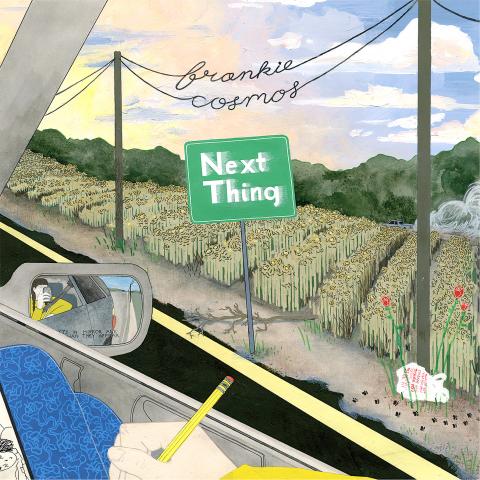Velvet Portraits, Terrace Martin, Sounds of Crenshaw/Ropeadope
Terrace Martin is a maestro of the margins, the sort of musician who’s often at his most effective just on the edges of the frame. A jazz-trained alto saxophonist with a lissome, sweet-tart sound, he’s also a producer and rapper whose roots stretch deep into the West Coast hip-hop scene; the guest list on his 2013 full-length debut, 3ChordFold (AKAI/Empire), included Snoop Dogg, Kendrick Lamar, Ty Dolla Sign, James Fauntleroy and Ab-Soul.
Martin’s smoothly sprawling new album, Velvet Portraits, is also crowded with collaborators, but none of the above, despite the fresh sizzle of Martin’s work with Lamar. It’s as if the agenda were to reclaim a little breathing room and remind the world of Martin’s other regions of interest.

So Velvet Portraits, the first release on his Sounds of Crenshaw label, unfolds as a tasting menu of Los Angeles soul-jazz, G-funk and quiet-storm R&B. With rare exceptions — like Valdez Off Crenshaw, which could honestly be the work of a smooth-jazz veteran like Najee — Martin limits his saxophone playing, hanging back and choosing his spots. And even then, he often cedes the brighter spotlight to a peer, like tenor saxophonist Kamasi Washington (Think of You) or trumpeter Keyon Harrold (Tribe Called West).
The result of this self-editing is that greater emphasis falls on Martin’s choices as a producer-bandleader. He made most of Velvet Portraits with a stable core of musicians, including his father, the seasoned drummer Curly Martin. This crew is equally at ease playing gluey, smoldering R&B (Oakland, a perfect vehicle for the vocalist Lalah Hathaway); crisp, Curtis Mayfield-esque funk (Push, with a more excitable singer, Tone Trezure); and slow-drag gospel-soul (Patiently Waiting, which has the Emotions singing backup for Uncle Chucc).
Martin includes a few nods to his work on Lamar’s brilliant 2015 album, To Pimp a Butterfly (TDE/Aftermath/Interscope): a chamberesque expansion of Mortal Man, the hazy coda of a track called Curly Martin (previously heard in the fade-out to The Blacker the Berry). These moments are casually evocative, presented without fanfare. Martin, who has lately been in the studio with both Compton rapper YG and jazz pianist Herbie Hancock, knows better than to dwell on recent successes though he’s not averse to riding a wave.

— NATE CHINEN, NY TIMES NEWS SERVICE
Landing Where Pop Meets R&B, Lukas Graham, Lukas Graham Warner Bros

What a nice guy Lukas Graham Forchhammer is — respectful toward his parents, hardworking, grateful to be heard. He’s the singer, lyricist and leader of a Danish band, Lukas Graham, that is releasing its American debut album with what’s already an international hit, 7 Years. In that song, he cherishes his parents’ advice about how to get through the decades of life, mourns his father’s death and looks forward to children of his own.
It’s the kind of growing-up-and-aging-gracefully song that’s a country-music staple. But 7 Years is placed instead where pop meets R&B. Its tune circles through a few notes; the lead vocal hints at Michael Jackson’s tenor quaver, and there’s a hip-hop undertow of sustained strings and a sparse backbeat. It’s sweet earnestness in a shrewd, ambitious package.
The music, like much Scandinavian pop, ignores genre to draw on whatever works, current and vintage. It merges electronic dance music keyboards with Bee Gees falsettos in Take the World by Storm, puts an R&B croon atop hints of Beethoven’s Moonlight Sonata in Better Than Yourself (Criminal Mind Pt. 2), and looks back to 1970s and 1980s R&B (more Hall & Oates than Stevie Wonder) in Strip No More and Drunk in the Morning, two songs that admit to boys-will-be-boys misbehavior. What Happened to Perfect, a fraying-romance song, places somber organ chords behind an increasingly desperate plea.
But through most of the album, filial loyalty merges with humble-bragging — not only in 7 Years but also in You’re Not There, another elegy for his father, and in Mama Said, a song about a non-affluent childhood that echoes (and credits) the chorus from Annie that Jay Z also used in Hard Knock Life. In Happy Home, the singer crows about the band’s media coverage and cash flow, but takes care to credit everything to the lessons of parents and grandparents.
Behind the modesty, though, is an equally determined sense of enterprise. Don’t You Worry ‘Bout Me starts with the piano and organ of an old-fashioned gospel song and turns into lilting, upbeat soul as Forchhammer sings about transcending sorrow via careerism. “A lot of people told me, when daddy passed away/Go take some time off, but I got no time to waste,” he sings. That’s a statement of priorities, a determined flash of candor.
— JON PARELES, NY TIMES NEWS SERVICE
Next Thing, Frankie Cosmos, Bayonet
Snapshots of teenage wonder and malaise dominate Next Thing, the wondrous new Frankie Cosmos album. Take If I Had a Dog, one of the album’s most deceptive numbers. Greta Kline — Frankie Cosmos is her recording alias — begins with a sheepish musing: “If I had a dog, I’d take a picture every day/Am I still so sad? Is that pretty lame?”
That small note of inner sadness is soon amplified, then twisted:
If I had a love, I’d draw a picture every day Am I still so mad? I guess that’s pretty lame Everybody says “Your first one’s just a gameyou’ll find a better one ...” and a comment about my body
All the while, Kline, 22, holds firm in her voice, which is quietly steady. She sings with sweetness and curiosity, without any flickers of recrimination, letting her voice slip on and off a note when doing so conveys a point more intensely.
Next Thing is a modest bulking up of the records she once posted to the site Bandcamp, culminating in her excellent 2014 album, Zentropy. But even though Kline fronts a proper band now, her approach hasn’t much changed. Next Thing is her longest album, but still a collection of fragments — 15 songs, none of them over 2 minutes 45 seconds.
And her songs, even the longer ones, are still written as clear, sharp fragments as Kline flaunts her emotional bruises. O Dreaded C Town is about how difficult it is to rewrite the history of a city shared with a lover: “I still think you’re in every van/And I peer into all of them.”
Kline’s songs don’t last long, and neither does her imagery, but she can be exceptional at capturing how quickly frail things can break, taking devastating turns in just a couple of lines, as on Too Dark: “If your love was strong as my shame/I’d marry you and take your name.”
Living moment to moment can only lead to uncertainty though, and when she’s not underscoring the hurt of a poignant insult, Kline is showing how difficult it can be to fill in the gaps in between. On “Is It Possible/Sleep Song,” she muses, “New York feels so huge/What’s up with my fate?” That part hasn’t been written yet.
— JON CARAMANICA, NY TIMES NEWS SERVICE

June 9 to June 15 A photo of two men riding trendy high-wheel Penny-Farthing bicycles past a Qing Dynasty gate aptly captures the essence of Taipei in 1897 — a newly colonized city on the cusp of great change. The Japanese began making significant modifications to the cityscape in 1899, tearing down Qing-era structures, widening boulevards and installing Western-style infrastructure and buildings. The photographer, Minosuke Imamura, only spent a year in Taiwan as a cartographer for the governor-general’s office, but he left behind a treasure trove of 130 images showing life at the onset of Japanese rule, spanning July 1897 to

In an interview posted online by United Daily News (UDN) on May 26, current Chinese Nationalist Party (KMT) Chairman Eric Chu (朱立倫) was asked about Taichung Mayor Lu Shiow-yen (盧秀燕) replacing him as party chair. Though not yet officially running, by the customs of Taiwan politics, Lu has been signalling she is both running for party chair and to be the party’s 2028 presidential candidate. She told an international media outlet that she was considering a run. She also gave a speech in Keelung on national priorities and foreign affairs. For details, see the May 23 edition of this column,

At Computex 2025, Nvidia CEO Jensen Huang (黃仁勳) urged the government to subsidize AI. “All schools in Taiwan must integrate AI into their curricula,” he declared. A few months earlier, he said, “If I were a student today, I’d immediately start using tools like ChatGPT, Gemini Pro and Grok to learn, write and accelerate my thinking.” Huang sees the AI-bullet train leaving the station. And as one of its drivers, he’s worried about youth not getting on board — bad for their careers, and bad for his workforce. As a semiconductor supply-chain powerhouse and AI hub wannabe, Taiwan is seeing

Jade Mountain (玉山) — Taiwan’s highest peak — is the ultimate goal for those attempting a through-hike of the Mountains to Sea National Greenway (山海圳國家綠道), and that’s precisely where we’re headed in this final installment of a quartet of articles covering the Greenway. Picking up the trail at the Tsou tribal villages of Dabang and Tefuye, it’s worth stocking up on provisions before setting off, since — aside from the scant offerings available on the mountain’s Dongpu Lodge (東埔山莊) and Paiyun Lodge’s (排雲山莊) meal service — there’s nowhere to get food from here on out. TEFUYE HISTORIC TRAIL The journey recommences with